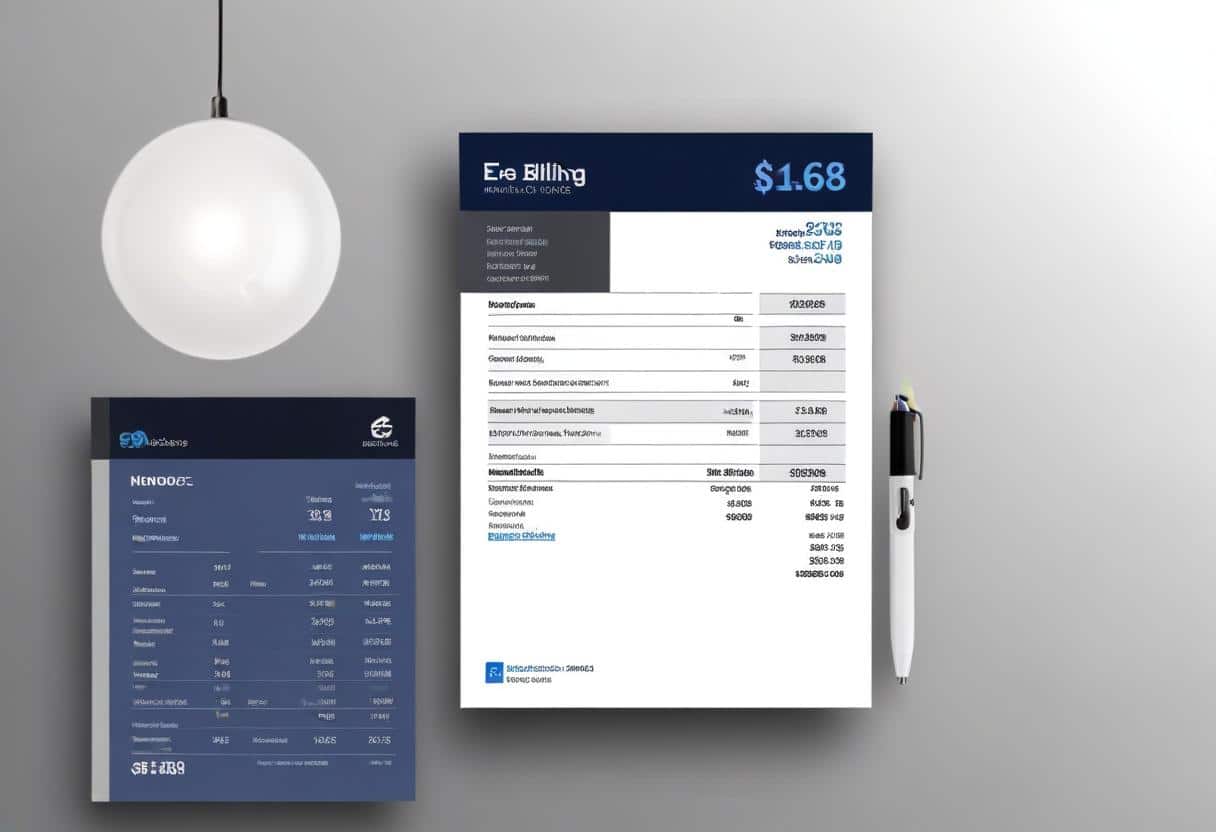Effective
merchant services play a crucial role in the success of small businesses. These services encompass everything from payment processing to customer data analytics, each designed to streamline operations and enhance customer experiences. By optimizing these aspects, businesses can significantly increase their revenue and establish a loyal customer base.
In today’s competitive market, implementing efficient merchant service strategies is not just an option but a necessity. The right approach can simplify transactions, bolster security, and provide valuable insights into consumer behavior. This article will explore seven actionable strategies that can elevate your business operations and drive substantial revenue growth. Read on to discover how you can leverage these tools for optimal performance and sustained success.
Merchant Services Diversify Payment Options
Expanding the range of payment options is essential for small businesses aiming to increase revenue. Providing various methods such as
credit and debit cards, digital wallets, and contactless payments enhances customer convenience. When customers find a payment method that suits their preference, they are more likely to complete the purchase. For instance, integrating platforms like Apple Pay or Google Wallet can cater to tech-savvy consumers who prefer using their mobile devices over traditional cards.

Offering multiple payment options also broadens your customer base. Not everyone has access to credit cards; some might use prepaid solutions or mobile payment apps instead. This diversity enables you to capture sales from different segments of the market. A retail store that accepts digital currencies like Bitcoin might attract a niche but loyal group of cryptocurrency users. This inclusivity ensures that no potential sale is lost due to limited payment options.
Investing in an all-in-one point-of-sale (POS) system can simplify this diversification process. Modern POS systems usually support various payment methods seamlessly and can be updated as new technologies emerge. By adopting a versatile POS solution, your business remains adaptable and well-positioned to meet evolving consumer preferences. Encourage transaction completion by ensuring every shopper finds at least one familiar and convenient way to pay.
Implement Mobile Payment Solutions
Cater to the growing number of mobile-savvy consumers by adopting mobile payment solutions. More customers now prefer paying with their smartphones or digital wallets due to the convenience and speed they offer. By integrating these options into your payment process, you can attract tech-savvy consumers who expect modern payment methods. This not only improves customer experience but also positions your business as forward-thinking and adaptable.
Streamline the checkout process for faster transactions, enhancing efficiency for both customers and employees. Quick and easy payments reduce wait times, leading to higher customer satisfaction. For instance, businesses that implemented NFC (Near Field Communication) technology reported a significant decrease in transaction times. Automated processes free up time for staff to engage more with customers, providing better service overall.
To further illustrate, consider a small retail store that adopts mobile POS (Point of Sale) systems. These systems allow sales associates to complete transactions anywhere in the store, thus eliminating long lines at a cash register. This flexibility not only boosts sales during peak hours but also creates a seamless shopping experience – one where customers are more likely to return due to the convenience offered.
Leverage Customer Data Analytics
Analyzing customer transaction data can provide valuable insights into consumer behavior and preferences. For instance, by examining purchasing patterns, businesses can identify which products or services are most popular at different times of the year. This knowledge allows for better inventory management and effective promotional strategies targeting high-demand periods. Implementing robust analytics tools helps track detailed metrics such as average transaction value, frequency of purchases, and peak shopping times.
Tailoring marketing strategies based on these analytics creates a more personalized experience for customers. For example, if the data reveals that a segment of customers frequently buys certain items together, you can design bundled offers that appeal specifically to them. Additionally, understanding spending habits enables targeted promotions through email campaigns or social media ads that resonate with specific groups. This approach not only increases sales but also enhances customer satisfaction by making them feel understood and valued.
Moreover, leveraging data analytics helps in predicting future trends and customer needs. By recognizing emerging patterns early on, businesses can stay ahead of the competition by stocking trending products or offering innovative solutions before they become mainstream. This proactive stance fosters a forward-thinking image and attracts trend-conscious consumers looking for the latest offerings. Overall, integrating data analytics into your merchant services strategy provides critical insights that drive smarter business decisions and revenue growth.
Merchant Services Enhance Security Measures
Protect sensitive customer information with advanced encryption techniques. Shielding transaction data helps prevent breaches and cyber-attacks, which can have devastating effects on both your business reputation and financial stability. Implementing technologies like tokenization, where sensitive data is replaced with a secure token, adds an extra layer of security. For example, using end-to-end encryption ensures that information sent from the point of sale to the payment processor remains secure throughout its journey.
Build trust with customers by ensuring secure transactions. Consumers are aware of the risks associated with online and electronic payments; prioritizing their security can enhance loyalty and confidence in your brand. Display trust badges and SSL certificates visibly on your website to reassure customers their personal data is protected. Additionally, regular compliance checks and updates to your payment systems can help detect vulnerabilities before they become threats.
Implement multi-factor authentication (MFA) for enhanced security verification processes. MFA requires multiple forms of identification before authorizing a payment, significantly reducing the risk of fraudulent activities. For instance, if a customer enters their password incorrectly but provides valid biometric data or a generated code sent to their phone, access may still be granted securely. This not only protects your revenue but also fosters a reliable shopping environment that encourages returning customers.
Integrating vigilant security measures into your merchant services is non-negotiable in today’s digital landscape. By investing in robust encryption methods and transparent security practices, small businesses can defend against possible threats while cementing trust among their consumer base. This bolsters overall customer satisfaction and promotes sustained revenue growth through repeated business engagements.
Offer E-Invoicing and Recurring Billing
Simplify billing processes by implementing e-invoicing and recurring billing systems. E-invoicing allows businesses to send invoices electronically, speeding up the transaction process. For example, a small marketing firm could issue digital invoices immediately after completing a project, reducing delays in payment collection. Clients receive the invoice via email or through an online portal, which they can pay instantly using various payment methods. This reduces paperwork for both parties and minimizes errors that often occur with manual invoicing.
Recurring billing is another powerful tool for improving cash flow management. Businesses with subscription models or ongoing services benefit significantly from automated payments. Take a fitness studio offering monthly memberships; setting up recurring billing ensures consistent revenue without relying on clients to make manual payments each month. This automation not only guarantees timely payments but also allows the business owner to focus more on service improvement rather than administrative tasks.

Moreover, e-invoicing and recurring billing enhance customer satisfaction by providing convenience and reliability. Customers appreciate the ease of settling bills electronically and the consistency of automated payments for regular services. As a result, businesses build stronger relationships with their clients, increasing customer retention rates. In turn, this boosts overall revenue while streamlining bookkeeping and financial forecasting efforts, setting the stage for sustained growth.
Integrate Loyalty Programs
Establishing a robust loyalty program can significantly increase customer retention and repeat purchases. By offering rewards or incentives, businesses encourage customers to come back and make additional purchases. For example, if you own a cafe, consider implementing a punch card system where customers receive a free coffee after buying ten. This small reward encourages them to return frequently.
In addition to boosting sales, loyalty programs provide invaluable data about your customers. Each transaction can reveal purchasing habits, average spending amounts, and preferences for certain products or services. Utilize this information to tailor your marketing efforts. For instance, if data shows that many loyalty members purchase specific seasonal items, send targeted promotions for those products when the season approaches.
Another advantage of loyalty programs is their ability to foster a strong relationship between the business and its customers. Personalized deals based on their past purchases make customers feel valued and understood. Retail stores often use such strategies by offering personalized discounts on frequently purchased items or providing early access to new collections for loyal members. These gestures not only retain existing customers but also enhance overall customer satisfaction and brand affinity.
Overall, integrating a well-designed loyalty program is more than just rewarding repeat purchases–it’s about collecting insights that drive smarter business decisions while deepening customer engagement. Implementing these strategies can lead to sustained growth and higher revenue as you build lasting connections with your clientele.
Negotiate Competitive Rates and Fees
Lowering operational costs is essential for boosting your business’s bottom line. One effective way to achieve this is by negotiating competitive rates and fees for your merchant services. Credit card processing fees can accumulate quickly, eating away at profits. By shopping around and comparing rates from various service providers, you can find options that offer more favorable terms. Don’t be afraid to ask for rate reductions, especially if your transaction volume justifies it. Many providers are willing to lower their fees to retain good clients.
Exploring bulk rate discounts or establishing partnerships can also lead to significant savings. Some merchant service providers offer tiered pricing based on transaction volume; the more transactions processed, the lower the per-transaction cost. Partnering with industry associations or local chambers of commerce might help secure group discount rates not available to individual businesses. For example, a small business in a retail consortium may access collective bargaining power, achieving better rates than negotiating alone.
Additionally, consider leveraging strategic relationships with your current provider for better terms. If you’ve already built a strong relationship with your merchant service provider, they may be inclined to accommodate special requests or negotiate unique fee structures tailored to your needs. Always keep an eye on new entrants into the market who might offer innovative solutions at reduced costs as part of their strategy to disrupt established players.
Implementing these practices helps improve profit margins without altering the customer experience or product quality. Every dollar saved on processing fees is a dollar that can be reinvested into other areas of your business-like marketing campaigns, inventory expansion, or technology upgrades–ultimately contributing to overall growth and customer satisfaction.
Merchant Services Conclusion
Implementing diverse payment options, mobile payment solutions, and leveraging customer data analytics can significantly
boost your revenue. Enhancing security measures, offering e-invoicing and recurring billing, integrating loyalty programs, and negotiating competitive rates are all proven strategies for increasing profitability.
We urge you to adopt these merchant services strategies to see optimal growth in your small business. By embracing these practices today, you position yourself for sustained success and a stronger bottom line tomorrow.
Working with United Banc Card of TN
If you find yourself wanting to conquer your restaurant, retail shop, look no further thanUnited Banc Card of TN. With their innovative solutions and trustedPOS System services, they will guide you towards financial success. Whether you are asmall business owneror an individual looking to manage your finances better, United Banc Card of TN has the tools and expertise to help. Call us today @615-476-0255




